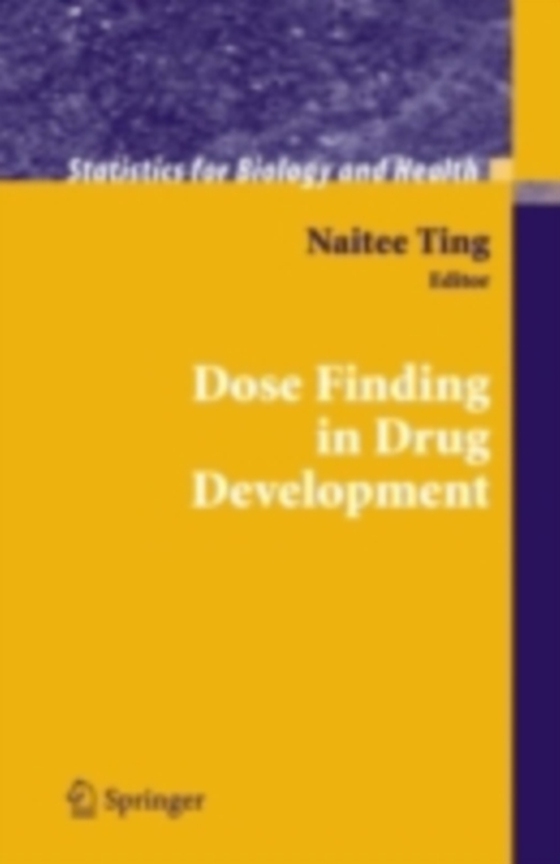
Dose Finding in Drug Development e-bog
1021,49 DKK
(inkl. moms 1276,86 DKK)
This book emphasizes dose selection issues from a statistical point of view. It presentsstatisticalapplicationsinthedesignandanalysisofdose-responsestudies. The importance of this subject can be found from the International Conference on Harmonization (ICH) E4 Guidance document. Establishing the dose-response relationship is one of the most important act- ities in developing a new drug. A clini...
E-bog
1021,49 DKK
Forlag
Springer
Udgivet
29 december 2006
Genrer
Pharmacology
Sprog
English
Format
pdf
Beskyttelse
LCP
ISBN
9780387337067
This book emphasizes dose selection issues from a statistical point of view. It presentsstatisticalapplicationsinthedesignandanalysisofdose-responsestudies. The importance of this subject can be found from the International Conference on Harmonization (ICH) E4 Guidance document. Establishing the dose-response relationship is one of the most important act- ities in developing a new drug. A clinical development program for a new drug can be broadly divided into four phases - namely Phases I, II, III, and IV. Phase I clinical trials are designed to study the clinical pharmacology. Information - tained from these studies will help in designing Phase II studies. Dose-response relationshipsareusuallystudiedinPhaseII.PhaseIIIclinicaltrialsarelarge-scale, long-term studies. These studies serve to con?rm ?ndings from Phases I and II. ResultsobtainedfromPhasesI,II,andIIIclinicaltrialswouldthenbedocumented and submitted to regulatory agencies for drug approval. In the United States, - viewers from Food and Drug Administration (FDA) review these documents and make a decision to approve or to reject this New Drug Application (NDA). If the new drug is approved, then Phase IV studies can be started. Phase IV clinical trials are also known as postmarketing studies.
 Dansk
Dansk

